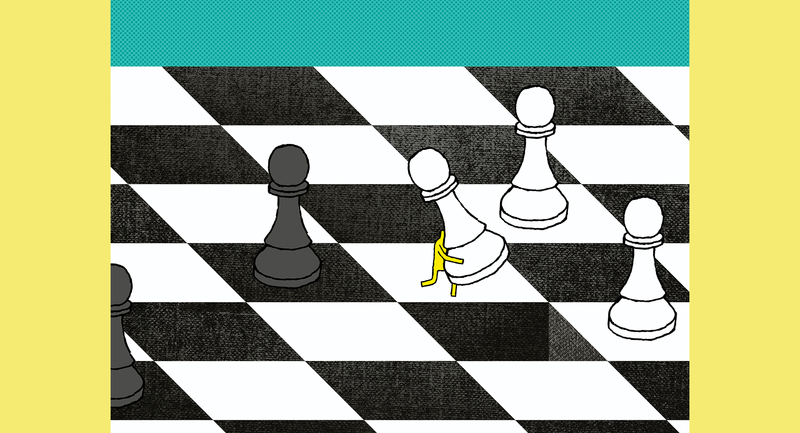In our 2017 book, Mastering Formative Assessment Moves (ASCD), we outlined seven high-leverage formative assessment strategies that promote ambitious teaching and deeper learning. Since then, we've been working with pre- and in-service teachers who are implementing the new English Language Development Standards (2014) in California, and we have begun to see how these strategies can serve as the natural bridge to help English language learners reach greater proficiency in their understanding of academic language.
Research tells us that the assessment choices teachers make in their classrooms matter. John Hattie's findings (2009, 2012) remind us that student achievement outcomes can be mapped to specific high-leverage practices. We know, after years of top-down reforms, that formative assessment is more than just a buzzword. For teachers working with English language learners, these sound formative assessment practices can help make a difference minute by minute.
At their core, assessment for learning and teaching for understanding in today's diverse classrooms are the same act. Knowing who we are teaching, what language demands are embedded in the curriculum, and how to uncover the academic language implicit across a unit are tall tasks for anyone, but these instructional competencies are especially crucial in the context of teaching students who are ELLs. When working in linguistically diverse classrooms—where the demands for active speaking and listening skills are embedded in the lesson—teachers need a framework for monitoring student uptake and engagement with the content.
Linquanti (2014) notes that formative assessment as a process focuses on scaffolding academic language supports, building equity of participation and voice, and helping all students to stretch and increase their talk- and think-time in our classrooms. Formative assessment, he argues, provides linguistic-minority and high-poverty students in particular with multiple opportunities to develop academic uses of language while collaboratively grappling with subject-matter content and disciplinary practices.
In our work with beginning teachers who serve students from linguistically and culturally diverse backgrounds, we have seen how our seven core assessment strategies can make a difference for ELLs. These seven strategies—priming, posing, pausing, probing, bouncing, tagging, and binning—are simple, but they require lesson planning as well as reflection on what worked and what can go better next time.
The key is to connect myriad ELL support strategies with formative assessment moves to better assess language learners during the lesson. This can also give teachers invaluable, just-in-time feedback on how teachers are doing and the impact of their lessons. Here are the seven strategies we've identified to forge this intersection of ELL learning and formative assessment moves.
Priming: Preparing the Groundwork
Children's usual modes of communication (on the playground, with friends, in their families, or with neighbors) frequently do not match the speaking-and-listening-intensive formative assessment processes many teachers expect students to engage in during class. Priming moves prepare the groundwork for these new ways of communicating.
Priming moves are especially important for ELLs. Because language and culture are so closely intertwined, differences in language use are nearly always associated with sociocultural differences (Gee, 2007). This means that students arrive at school with particular cultural scripts for using language to communicate and to learn. Some students may have been socialized to listen much more than to speak, and rich formative assessment practice—which is characterized by posing questions, requests for elaboration, and persistent language use between teachers and students and students with classmates—can place demands on ELLs that are much more taxing than for other students.
Priming techniques, such as when the teacher says, "I bet someone could build on this—who wants to try?" or "Write down your thoughts, even if they feel unfinished. Your thinking is important," encourage learners to open up their thoughts for informal, safe examination. These simple but powerful statements can be easily translated into students' home languages and made visible in the classroom as visual cues and verbal reminders. Teachers can prime at the beginning of the lesson or during the formative assessment activities and tasks, as well as at the end.
Priming students to listen and learn from all classmates' questions is just as important as doing so for teacher-generated ones. To encourage careful listening, you may say, "Let's see what we can learn from Jessenia's question. Every perspective is important." These types of phrases position ELLs as valued contributors and promote equity of voice. Language becomes an asset to the learning community rather than a perceived barrier to success.
Posing: Asking Questions that Stretch Students
Teachers ask hundreds of questions a day, as many as 120 an hour (Vogler, 2008). There is evidence that, in U.S. classrooms, yes-no questions make up approximately one-fifth of teachers' questions. To boost students' participation, or as simple, quick checks for understanding, teachers often ask yes-no questions to move lessons forward. The problem is that using these types of questions does not allow teachers to accurately assess their ELLs' development of academic language. Like most fill-in-the-bubble response formats, these questions don't ask students to apply or synthesize knowledge.
When teachers need to run "yes-no" checks for understanding, they should do so silently with a walkthrough, station to station. Students can write their answers (perhaps on individual whiteboards or sticky notes) rather than call them out. Teachers can make it a habit to also have students write why they are answering yes or no. Then students can pair-share (a rehearsal) before saying their responses aloud to the larger class. This one small change in delivery can help teachers make their questions count and stretch students to elaborate and justify answers.
Pausing: Listening More Closely and Better
Even more than many other students, ELLs need processing time to "transfer files" from short-term to long-term memory. Some ELLs need "wait time" not only to process information, but also to translate what teachers and classmates are saying and asking. Given that average wait times after teacher questions are only about one second (Black et al., 2003), teachers need to stop, wait, and listen.
Pausing does not always require silence. While silent think time is beneficial, so too is pairing and sharing to practice academic language among groups of students. The essential point is to arrange the lesson plan so that everyone has an equal opportunity to think, translate, and rehearse their response with a tablemate.
Teachers can give regular reminders that processing time is needed during small group and one-on-one conversations, or to prepare for a whole-class discussion. Post reminders like "Good answers take time" or "We all need time to be heard." Give students a hand signal they can use with one another when they need more think time in a conversation.
If pausing routines are not a regular part of classroom practice, teachers will miss critical opportunities to listen to their students as they talk with one another.
Probing: Asking Follow-Up Questions to Deepen Learning
We know from research that providing opportunities for students to articulate their thinking—in a variety of productive modes—is essential for language development. Moreover, subject matter expertise does not evolve in a vacuum. It is critical that ELLs in particular have the opportunity to rethink, revise, and re-consider ways of talking and writing "science" or "history" or "math" in the company of others (Walqui & Heritage, 2018). Inviting ELLs to engage in writing and speaking tasks in a lesson makes it more likely that all students, not just a few, will be included in classroom projects and conversations (Zwiers, 2007).
Teachers must help ELLs bridge new content and subject matter learning to their prior knowledge and experiences using language (Vygotsky, 1978). This cannot be done without probing or asking for elaboration on tentative "first-draft" answers. If we ask: "Can someone share why things sink and float?" in a unit on relative density, we must be prepared to provide word webs, journal entries, or other tools, as well as sentence frames and starters, so students can practice their responses. But we must also build lessons that embed scaffolded pair-shares, group talk, and gallery walks to prime, prompt, and support authentic communication among all students. Breaking it down matters, too: In a predict-observe-explain exercise, we must take the time to ask: "Who has a prediction?" "What do we mean by prediction?" "Do we have another way of saying this … is it the same as ‘to bet’ on something happening or bet on someone?"
To invite all students into this kind of conversation, we need a framework of rich learning targets. In schools and districts committed to deeper learning for ELLs, the habits of mind first identified by Deborah Meier (Duckor & Perlstein, 2014; Meier, 1995) can bring the academic language of standards-based education to life:
"So an assumption you're making is. … Is that how you see it?" (Perspective)"How do you know? … Can you explain it? … What is your evidence?" (Evidence)"So what if you change that variable? … What do you think will happen?" (Conjecture)"How are these events [things, ideas, facts, topics, etc.] related to one another?" (Connections)"What does this mean to you? … Is it working for you now?" (Relevance)
A wide range of probing strategies helps teachers gauge progress as much as it helps ELLs to feel a part of the classroom.
Bouncing: Sampling a Variety of Student Responses with Intention
We use the term "bouncing" in our framework to convey our concern for equity in terms of sampling student thinking during instruction. Obtaining a representative sample is a core principle of good scientific research. It is also a requirement for sound instructional decision making. Teachers who are making instructional decisions (often on the fly) using formative assessment strategies need to gather a wide range of student thinking on any given topic. If we undersample our ELL students' contributions in a lesson, by not including them in a rapid-fire class polling technology, for example, we will have a skewed picture of progress.
Too often, teachers only hear from their most active and verbal students during class (often native English speakers). This leads to a false sense of feedback. Teachers may think they have heard from their ELLs and created multiple opportunities to hear their voices, when in fact students without the same challenges are the ones answering all the questions.
Another problem we see is that rather than asking for oral recitation during a lesson to check for understanding, many teachers prefer written prompts. To cast a wider net, these teachers hope to hear from every student with an "entrance" or "exit" ticket. If every ELL student writes a response during class, they tell us, then they have a surefire method for evaluating academic language acquisition in the transformational geometry unit or the fruit fly lab.
But constructing informal assessment questions and interpreting the responses for ELLs requires care. Assessment experts remind us that poorly constructed prompts can confuse students. Since teachers cannot always anticipate the language demands of an entrance or exit ticket prompt in relation to every students' current English proficiency, they must instead use class time to explore the extent to which academic language influences the assessment process. A reliable picture of ELLs' understanding depends on good sampling strategies.
A better way to "bounce" for strategic sampling for ELLs is to read student responses to the prompt during a transition or break in the lesson. Real-time sampling can allow educators to explore why Amenah wrote nothing down, while Jorge wrote, "No comprendo" and Vy wrote, "My evidences are that I collected." Then be sure to not just make time to help clarify the prompt as ELLs read it, but also to allow them to elaborate on these "first-draft" responses during class time.
Tagging: Making Student Thinking Visible
Teachers can use tagging to stress the importance of everyone engaging in receptive (listening and reading) and productive (speaking and writing) academic language use in the classroom. Tagging—publicly representing what students say by writing their responses where all can read them—makes student thinking visible. The goal of tagging is to accurately record a wide variety of student responses so that each student can see their contribution is valued and the teacher can gain actionable information about where to direct the lesson next.
To make this practice less intimidating for ELL students, use the buddy system. Together with language partners who are more proficient in English, ELLs can write down their responses to open-ended questions. Then partners can go to the dry erase board together to share their ideas.
Tagging helps English language learners better comprehend other students' thinking. An ELL student may or may not understand, for example, a classmate's ideas about protein synthesis when they are first spoken. But when those ideas are written down, there is the opportunity to process, translate, commit to memory, and write information to build understandings. Tagging ensures, with a concrete visible procedure, that everything gets written down verbatim where all can see, ponder, and revisit the responses as needed during the lesson.
Binning: Noticing Patterns and Using Them for Next Steps
All teachers sort and categorize student responses into "bins." These bins (like "right," "wrong," "misconception," "off topic") help us make sense of student thinking. Sometimes our students' responses to instructional activities and assessment tasks fit neatly into predetermined boxes. Sometimes they do not.
In our framework, we define binning as noticing patterns in student responses, categorizing them along learning trajectories when possible, and using student thinking to inform next steps. A commitment to formative feedback is key. When teachers and students engage in assessment for learning they will need tools, language, and spaces in the lesson to improve "first-draft" efforts at speaking and writing in the subject discipline.
The art of formative feedback for students isn't about grading more often or more efficiently. Rather, ELLs, like all students, need support in generating positive communication loops. The question for us is not whether this or that ELL student is getting this or that intervention: We see the real challenge as whether students and teachers gain clarity about which "next steps" need to be taken, by whom, and how to "grow the work."
One way to support ELLs in their work is to use a progress guide for major assignments and performance tasks. A progress guide is a simpler, more focused alternative to a rubric. It can be a powerful tool to help ELLs, peers, and teachers keep focused on the content of their "first draft" work.
Figure 1 is an example of a progress guide for a performance task in an integrated science and humanities curriculum that asks students to take a position and provide evidence for that position with an argument. Teachers can use a progress guide to identify patterns (the percent of the class at a given level) and to make decisions about reteaching or lesson planning to better differentiate for student needs on the task. When connected to a well-written rubric, the progress guide is also intended as a scaffold. Mid-unit, we want students to self-assess their progress on a task, in this case, an essay regarding the causes of the Dust Bowl.
Figure 1. Example of a Progress Guide
Progress Guide: Causes of the Dust Bowl
Seven High-leverage Formative Assessment Moves to Support ELLs - table
| | |
|---|
| % of class | Can currently do | Next steps/Request |
| Weighs evidence | |
| Adds some evidence | |
| Takes a position | |
| Restates prompt | |
Experienced teachers, largely because they have a deep well of classroom experience to draw on, tend to not just bin student thinking as either correct or incorrect. They are able, instead, to see gradations, trajectories, and learning progressions (Heritage & Linquanti, 2014). It's as if they have many "virtual" progress guides in their minds to guide their formative feedback practices. These cognitively oriented and culturally responsive teachers can see in a student's provisional responses the beginnings of more sophisticated ways of thinking about the topic. From observing them, we can see how students' funds of prior knowledge and experience are actually opportunities to coach "reach" and "next steps" in academic language use.
Assessment for Deeper Understanding
Teachers are often overwhelmed by many demands in their work. Establishing a safe classroom learning environment, planning for lessons and infusing rigorous content into a unit, and keeping up with grading requirements—each of these competing pressures and demands can lead teachers away from the goal of teaching and assessment for learning to serve underserved students.
The good news is that making solid formative assessment moves to support ELLs does not require a stretch of the imagination. Research shows the tangible effects of formative assessment on student outcomes, and each of our seven formative assessment moves, when combined with the goal of advancing academic language acquisition, will help students make sense of the curriculum. The result is that children from different cultures and linguistic backgrounds are seen, heard, and listened to in ways that connect assessment for learning with teaching for deeper understanding.









